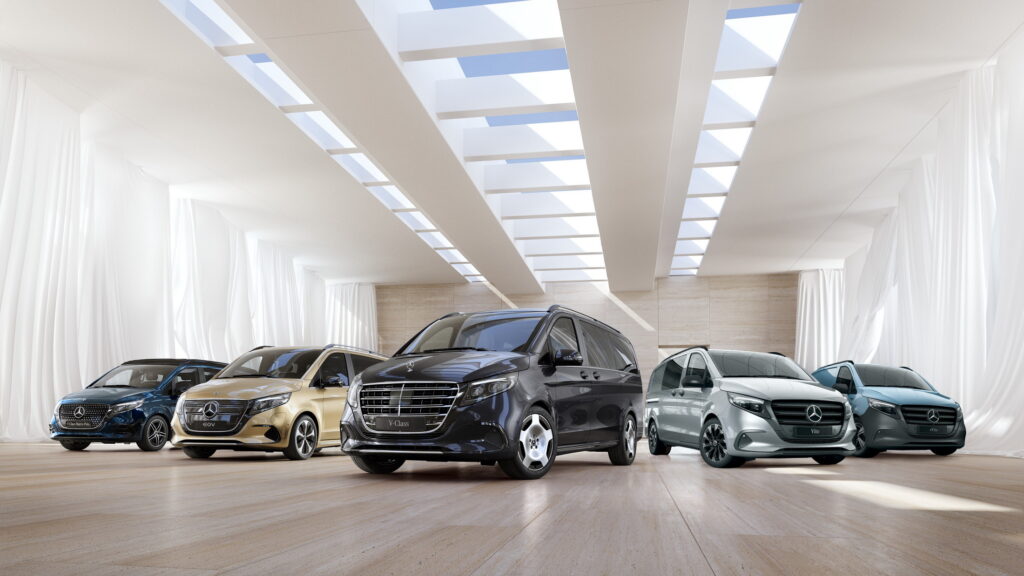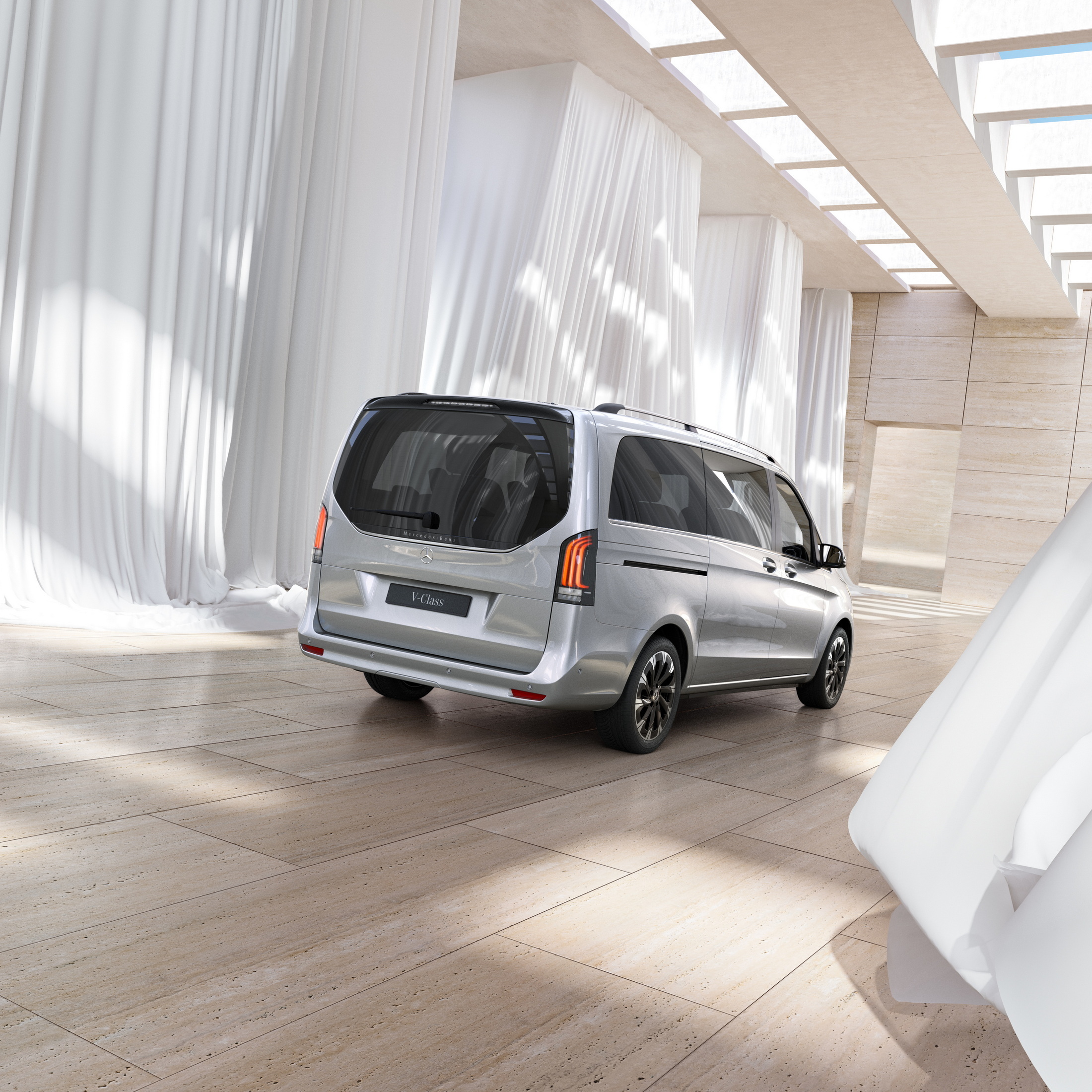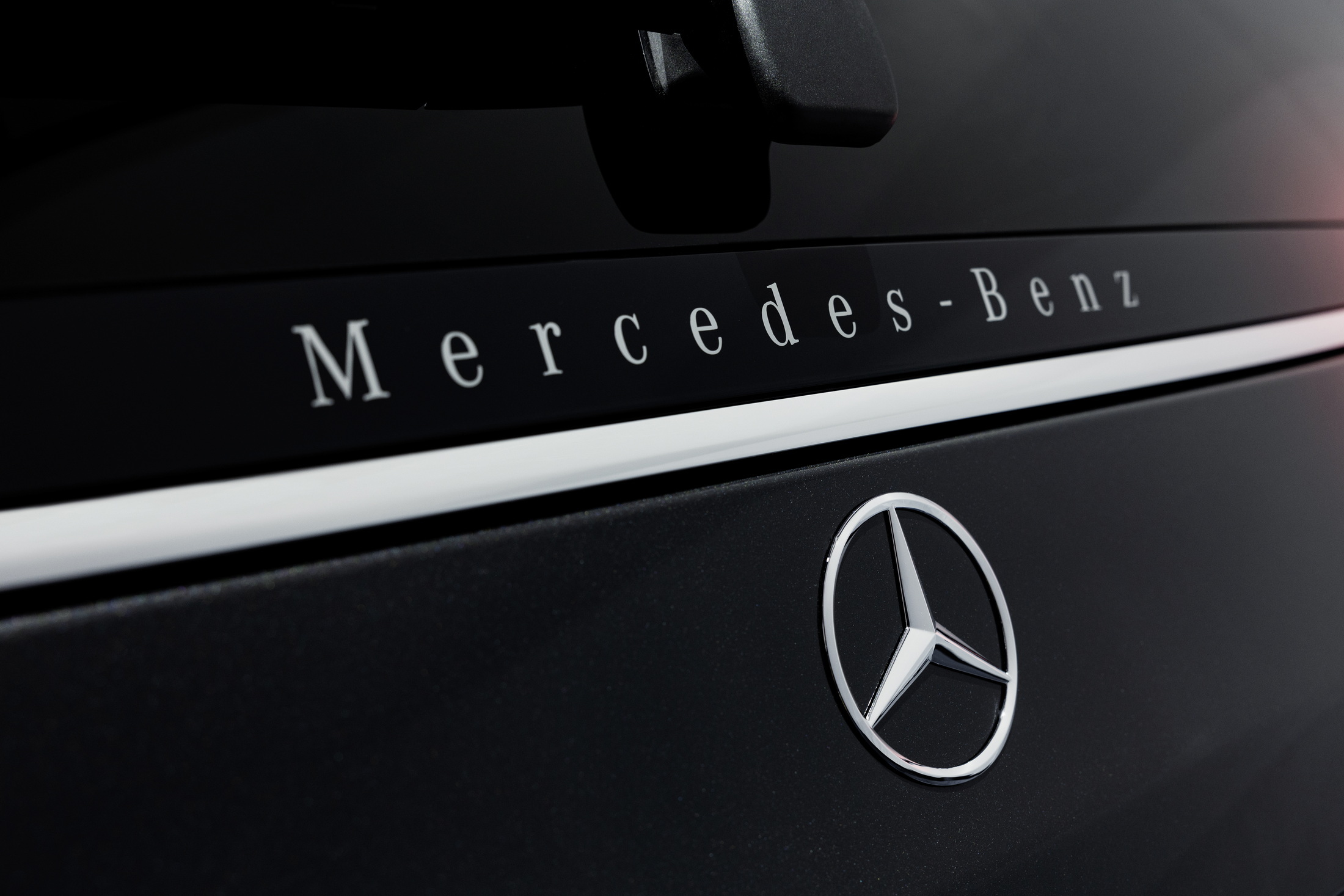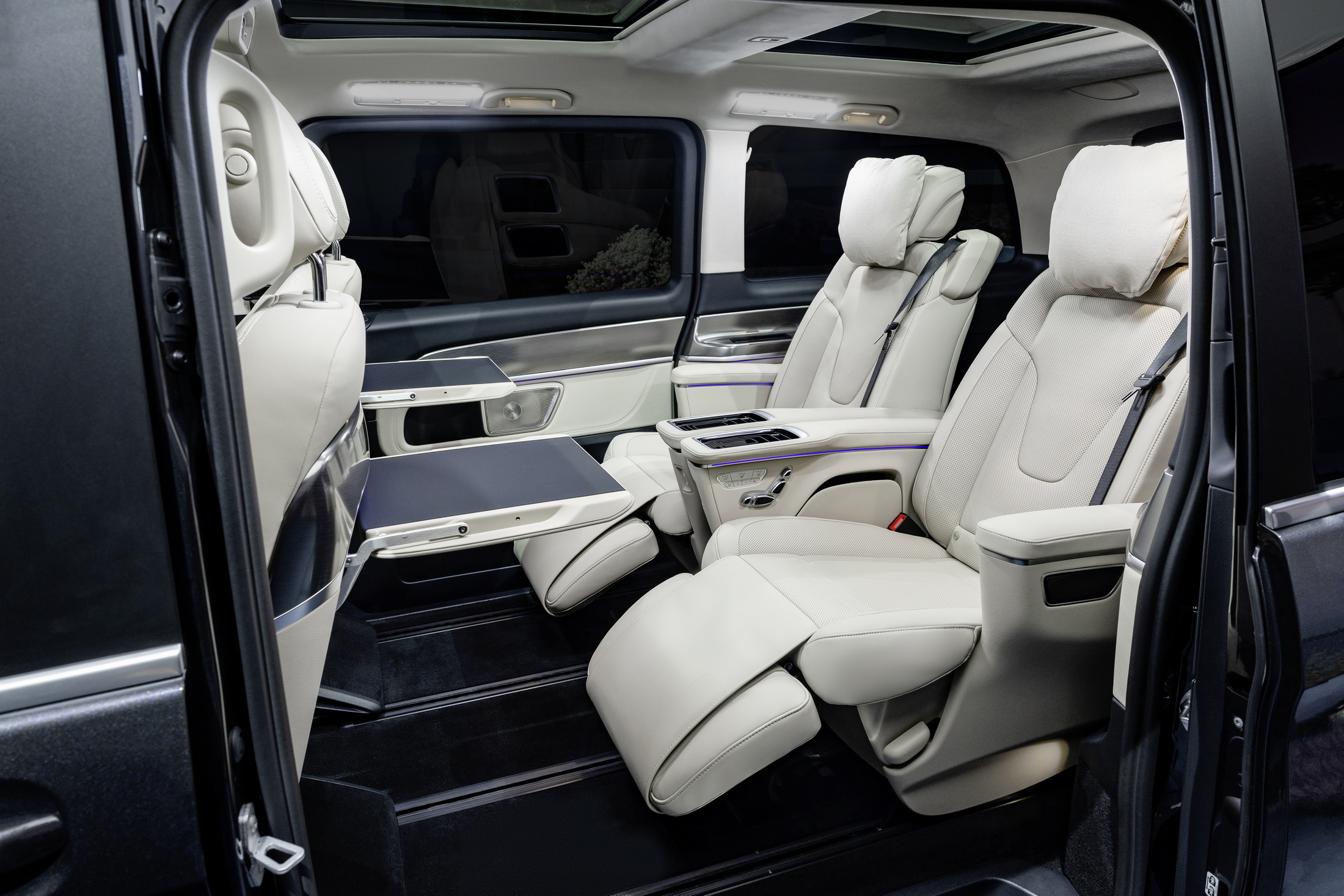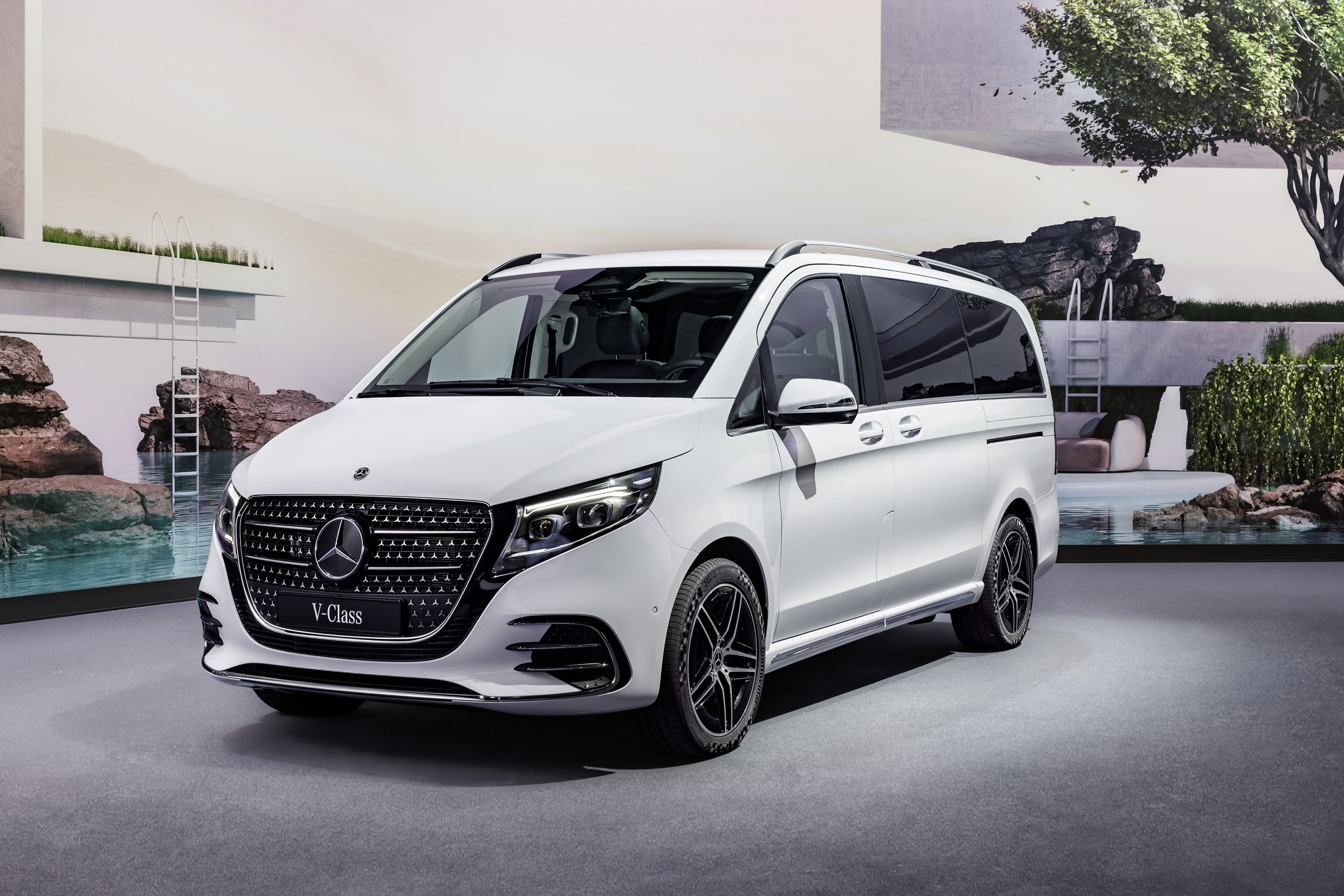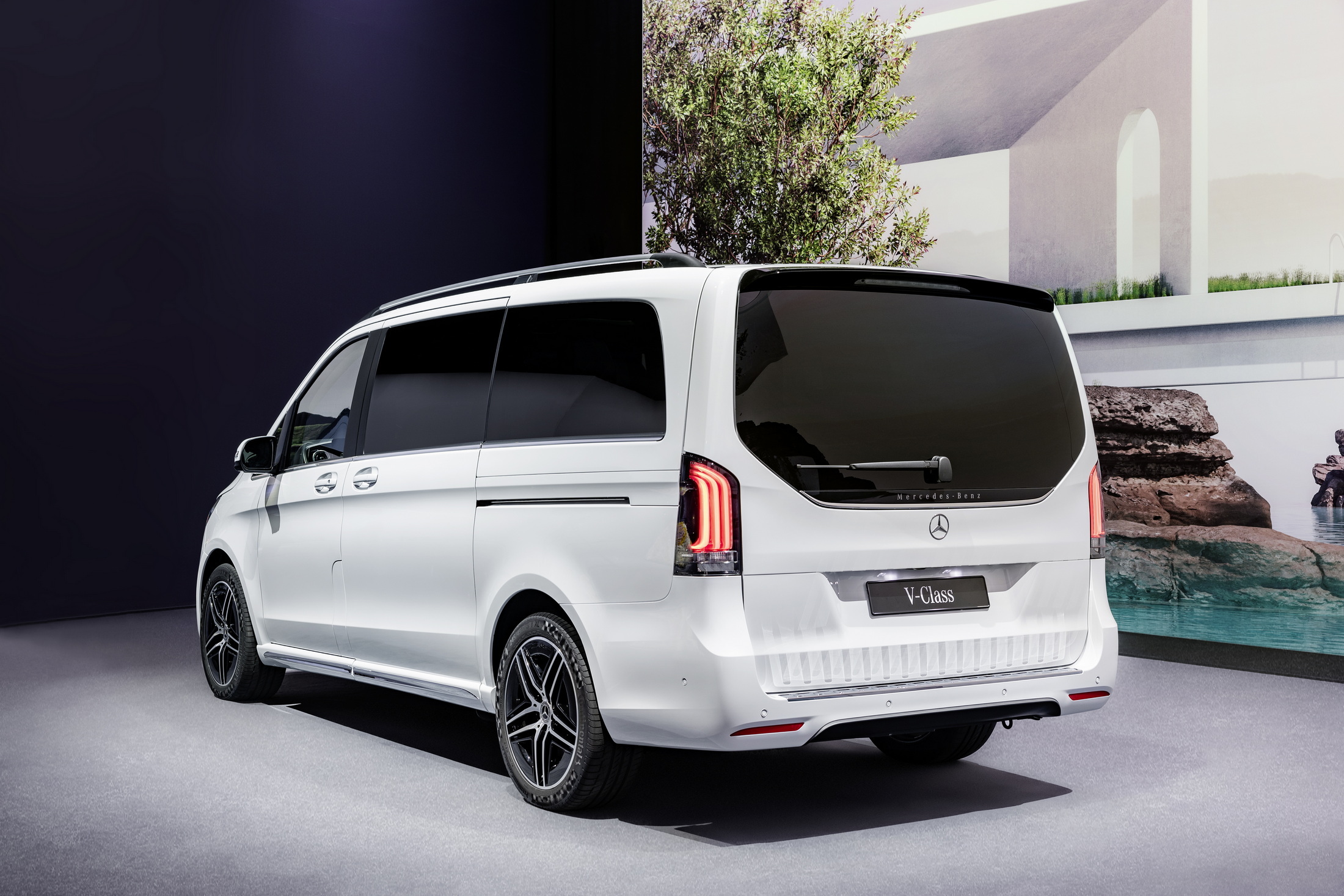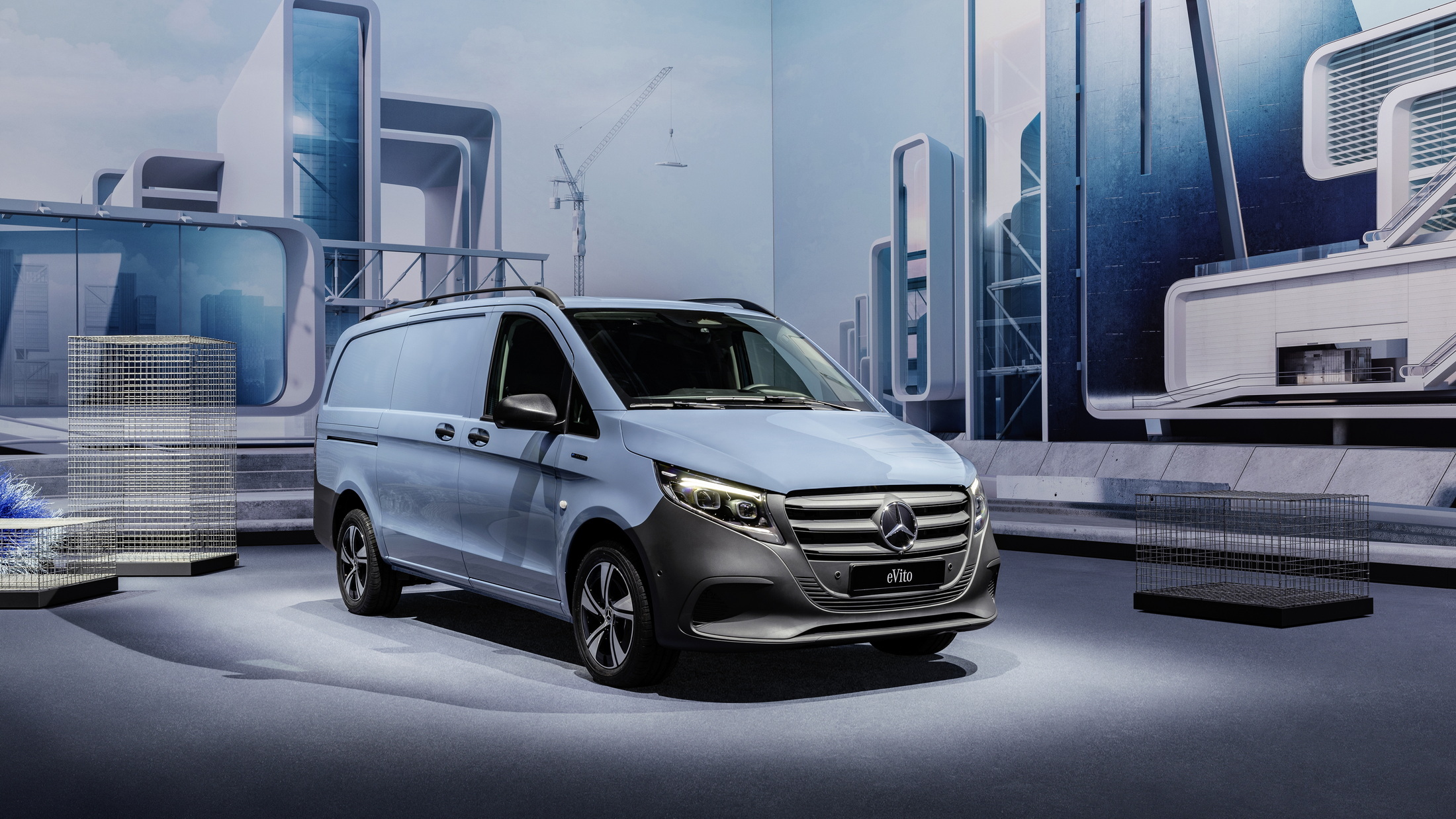Mercedes-Benz updated its entire midsize van family, including passenger and commercial versions in both ICE-powered and fully electric guises, making them more premium than before. The range includes the EQV and V-Class passenger vans, the V-Class Marco Polo camper, as well as the Vito and eVito LCVs. All of the got mild visual tweaks and overhauled interiors, adding more safety, comfort, and technology equipment.
The models are based on the third-generation V-Class that debuted in 2014 and got its first facelift in 2019. The new update brings a redesigned front bumper featuring a significantly larger grille and more modern intakes. Each variant has a unique design for the grille, in combination with different trim. Predictably, the passenger-focused V-Class and EQV look more luxurious, while the commercial Vito and eVito have a more utilitarian approach with unpainted bumpers in their entry-level forms.
Mercedes-Benz V-Class and EQV
The rest of the bodywork is largely carried over with the exception of new wheels (measuring 17, 18, and 19 inches) a fresh color palette, and the classier rear bumper of the V-Class and EQV. Optionally, the AMG Line and Night packages for the V-Class, and the EQV package for its electric counterpart can further spice up their appearance. Depending on the trim, the passenger vans get an LED strip around the grille and Multibeam LED headlights.
The interior is another point of differentiation between the passenger and the commercial range. The V-Class and EQV adopt a digital cockpit with a single panel housing dual 12.3-inch displays, while the dashboard looks nearly as premium as in Mercedes’ mainstream car and SUV offerings thanks to new climate vents and ambient lighting. On the other hand, the Vito and eVito get a simpler layout with a 10.25-inch touchscreen and a 5.5 display on the instrument cluster, alongside a dashboard setup that is focused on practicality, albeit with a less spartan approach compared to their predecessors.
Mercedes-Benz Vito and eVito
All models get the new MBUX infotainment. Commercial vans offer maintenance, accident, and breakdown management services, while passenger vans benefit from features like music streaming, Energizing comfort programs, and navigation with augmented reality. The electric models (EQV and eVito) support pre-air-conditioning and intelligent navigation with route planning and charging options.
The safety kit is also upgraded with new and improved driver assistance features including the Active Lane Keeping Assist, Intelligent Speed Assist, and Blind Spot Assist. The Active Distance Assist Distronic comes standard in the EQV and V-Class, and is optional in the Vito and eVito.
More: Mercedes To Offer Automatic Lane Changing Function To European Drivers Too
The company didn’t mention any changes in the powertrains, which likely means the current range will be carried over. As a refresher, the outgoing EQV came with a single electric motor producing 201 hp (150 kW / 204 PS) and 362 Nm (267 lb-ft) of torque. The electric van was available with two different battery capacities, 60 kWh for the EQV 250, and 90 kWh for the EQV 300 which can travel up to 418 km (260 miles) between charges. The ICE-powered lineup included 1.7, 2.0, and 2.2-liter turbodiesel four-cylinder powertrains.
Mercedes has sold 40,000 electric vans to date, and wants them to account for more than half of its total van sales by 2030. A big step forward will be the introduction of the new modular and scalable Van Electric Architecture (VAN.EA) in 2026, which will eventually underpin the next generation of electric midsize and large vans by Mercedes.
Mercedes-Benz Midsize Van Family




